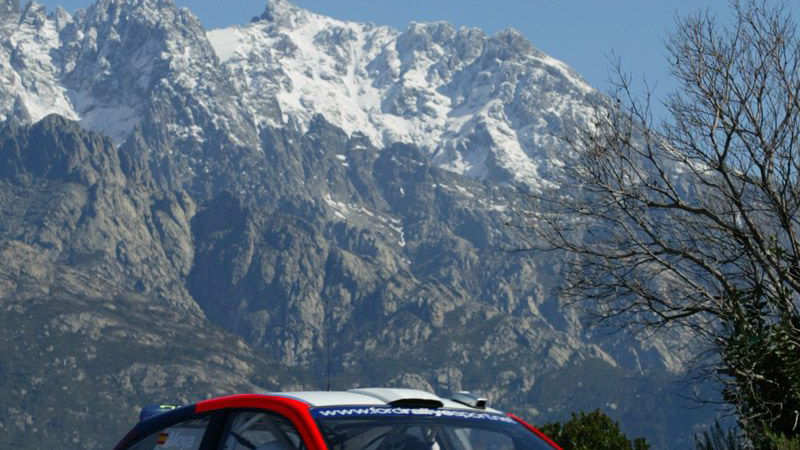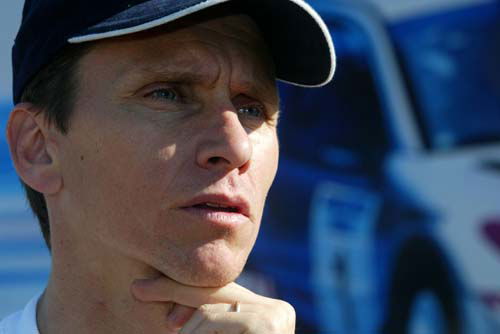Ford stars to bring Italian mountains to life.
The genteel pace of life in the Italian Riviera resort of Sanremo will be in marked contrast to the fast and furious activity in the mountains high above the town when the region hosts round 11 of the FIA World Rally Championship.
The Rallye Sanremo (19 - 22 September) is a magnet to tens of thousands of enthusiastic Italian fans and much of their passionate support is aimed towards Ford Rallye Sport's star pairings of Britons Colin McRae and Nicky Grist and Spaniards Carlos Sainz and Luis Moya.

The genteel pace of life in the Italian Riviera resort of Sanremo will be in marked contrast to the fast and furious activity in the mountains high above the town when the region hosts round 11 of the FIA World Rally Championship.
The Rallye Sanremo (19 - 22 September) is a magnet to tens of thousands of enthusiastic Italian fans and much of their passionate support is aimed towards Ford Rallye Sport's star pairings of Britons Colin McRae and Nicky Grist and Spaniards Carlos Sainz and Luis Moya.
Double world champions Sainz and Moya made their Italian debut in 1988 while McRae has won twice here from seven starts. In so doing, they have established themselves as firm favourites with the fans, who will enjoy a motorsport bonanza in their country - the Italian Grand Prix is held at Monza just four days before the rally.
Ford Rallye Sport go into the event lying second in the manufacturers' championship with McRae and Sainz second and fourth respectively in the drivers' standings and junior pairing Markko M?rtin and Michael Park in tenth. Just as importantly, the team boasts the best dependability record in the series. The Ford Focus RS World Rally Car has a tremendous 86% finishing record in 2002, with just four retirements from the 29 official entries to date. The finishing rate for all manufacturers cars is just 64%.
Rallye Sanremo is the final asphalt event of the 14-round championship but is in stark contrast to the previous sealed surface rally in Germany last month. The Italian roads are narrow and twisty and the uncertainties of the early Autumn weather on the mountain passes can create major headaches over tyre selection in what can be rapidly changing conditions.
All three drivers have a one-day test in Italy before the recce begins and McRae will concentrate on perfecting transmission and suspension set-up on the Focus RS. "Our car and tyre package is not as strong on asphalt as it is on gravel," said the 34-year-old Scot. "Because of the nature of the stages, and the amount of gravel on the roads in Germany, it's not really accurate to use that as an asphalt comparison. The last true asphalt rally was in Spain in March so we'll have to wait and see how much progress both we, and the other teams, have made.
"Tyre choice plays a big part in Italy. Although the asphalt isn't as abrasive as in Corsica, it's harder on the rubber than Spain. Conditions can change quickly and what seemed like the right tyre choice in the service park can turn out to be totally wrong if the weather alters in the mountains," he added.
Sanremo is one of the few championship rounds Sainz has still to win but two second and two third place finishes confirm the Spaniard's abilities in Italy.
"It's quite a difficult rally," said the 40-year-old Madrid-based driver. "The roads are tricky, very narrow in places and so there isn't the opportunity to cut corners like you can in Spain. We know it will be a tough rally for Ford but Sanremo is always a challenge and the weather is so unpredictable it's hard to forecast what will happen."
M?rtin is eager to improve his excellent performances recently, which have seen the 26-year-old Estonian score points on each of the last five rounds.
"I've never finished in Sanremo in four attempts so to reach the finish podium would be an improvement," he joked. "It's easy to make a mistake because the roads are so narrow and in early September there are often leaves and damp patches on the road in the shaded areas which can be very slippery.
"Many stages start on one side of the mountain, climb to the top and then descend the other face and that creates difficulties. The south facing roads are usually quite dry but those facing north are often damp and slippery, sometimes with water running across the road. If you hit a wet patch like that with dry weather tyres on the car it's easy to slide off the road," he added.
In the spotlight:
One of the saddest sights of the Rally Finland was the photographs and television footage of Colin McRae's Focus RS in flames on the final day, depriving the Scot of a well-deserved podium place. The car was burning for many minutes before a local fire engine extinguished the blaze. However, the strength of the car is such that McRae will be at the wheel of exactly the same vehicle in Italy.
"Although a lot of components were destroyed, the bodyshell itself was not damaged by the heat," said Ford Rallye Sport team director Malcolm Wilson. "All the heat was contained underneath the car although it looked bad from the outside. But inside the car, components like the seatbelts were not damaged and the fire hadn't event affected the paint on the boot floor.
"We put the car on the jig back at M-Sport and everything was fine so there was no reason why we couldn't rebuild it for Sanremo. The Focus is a strong vehicle anyway and we pay particular attention to ensure our rally cars are as well-built as they can be and this is proof of the value of that," he added.
Rally route:
After a ceremonial start in Sanremo on Thursday evening, the rally base moves east to Imperia, the single service park for the rally. All the 18 special stages, covering 385.84km in a route of 1407.04km, are in the mountains above the two towns. Each piece of road, with the exception of a short link near Rezzo, is used four times, twice in each direction.
Last year organisers had an ambitious plan to run a near 43km test across the backbone of the mountains, encompassing the classic Passo Teglia and Colle Langan stages. The idea had to be scrapped before the start due to roadworks but it is included for 2002 and the stage will be used twice during the second leg. That is the longest of the three days with 150.57km of competition.
